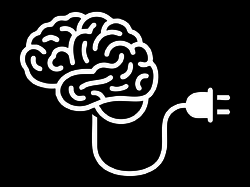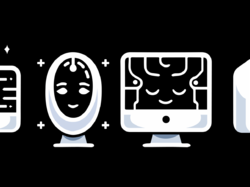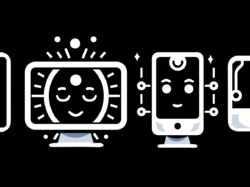Michal Malewicz explores what happens as AI gets better at core designer skills—not just visuals and words, but taste, experience, and research.
He points out that automation tends to devalue the stuff it creates—in both interest and attention. Execution, effort, and craft are what draw interest and create value, he says. Once the thing is machine-made, there’s a brief novelty of automation—and then emotional response falls flat: “The ‘niceness’ of the image is no longer celebrated. Everyone assumes AI made it for you, which makes them go ‘Meh’ as a result. Nobody cares anymore.”
As automated production approaches human quality, in other words, the human output gets devalued, too. As cheap, “good enough” illustration becomes widely available, “artisanal” illustration drops in value, too. Graphic designers are feeling that heat on their heels, and the market will likely shift, Michal writes:
We’ll see a further segmentation of the market. Lowest budget clients will try using AI to do stuff themselves. Mid-range agencies will use AI to deliver creatives faster and A LOT cheaper. It will become a quantity game if you want any serious cash. … And high-end, reputable agencies will still get expensive clients. They will use these tools too, but their experience will allow them to combine that with human, manual work when necessary. Their outputs will be much higher quality for a year or two. Maybe longer.
And what about UI/UX designers?
Right now the moat for most skilled designers is their experience, general UX heuristics (stuff we know), and research.
We’ve been feeding these AI models with heuristics for years now. They are getting much better at that part already. Many will also share their experience with the models to gain a temporary edge.
I wrote some really popular books, and chances are a lot of that knowledge will get into an LLM soon too.
They’ll upload everything they know, so they’ll be those “people using AI” people who replace people not using AI. Then AI will have both their knowledge and experience. This is inevitable and it’s stupid to fight it. I’m even doing this myself.
A lot of my knowledge is already in AI models. Some LLM’s even used pirated books without permission to train. Likely my books as well. See? That knowledge is on its way there.
The last thing left is research.
A big chunk of research is quantitative. Numbers and data points. A lot of that happens via various analytics tools in apps and websites. Some tools already parse that data for you using AI.
It’s only a matter of time.
AI will do research, then propose a design without you even needing to prompt.
This is all hard to predict, but this thinking feels true to the AI trend line we’ve all seen in the past couple of years: steady improvement across domains.
For argument’s sake, let’s assume AI will reach human levels in key design skills, devaluing and replacing most production work. Fear, skepticism, outrage, and denial are all absolutely reasonable responses to that scenario. But that’s also not the whole story.
At Big Medium, we focus less on the skills AI might replace, and more on the new experiences it makes possible. A brighter future emerges when you treat AI as a material for new experiences, rather than a tool for replacement. We’re helping organizations adopt this new design material—to weave intelligence into the interface itself. We’re discovering new design patterns in radically adaptive experiences and context-aware tools.
Our take: If AI is absorbing the taste, experience, and heuristics of all the design that’s come before, then the uniquely human opportunity is to develop what comes next—the next generation of all those things. Instead of using AI to eliminate design or designers, our Sentient Design practice explores how to elevate them by enabling new and more valuable kinds of digital experiences. What happens when you weave intelligence into the interface, instead of using it to churn out stuff?
Chasing efficencies is a race to the bottom. The smart money is on creating new, differentiated experiences—and a way forward.
Instead of grinding out more “productivity,” we focus on creating new value. That’s been exciting—not demoralizing—with wide-open opportunity for fresh effort, craft… and business value, too.
So right on: a focus on what AI takes or replaces is indeed an “era of meh.” But that’s not the whole story. We can honor what’s lost while moving toward the new stuff we can suddenly invent and create.





